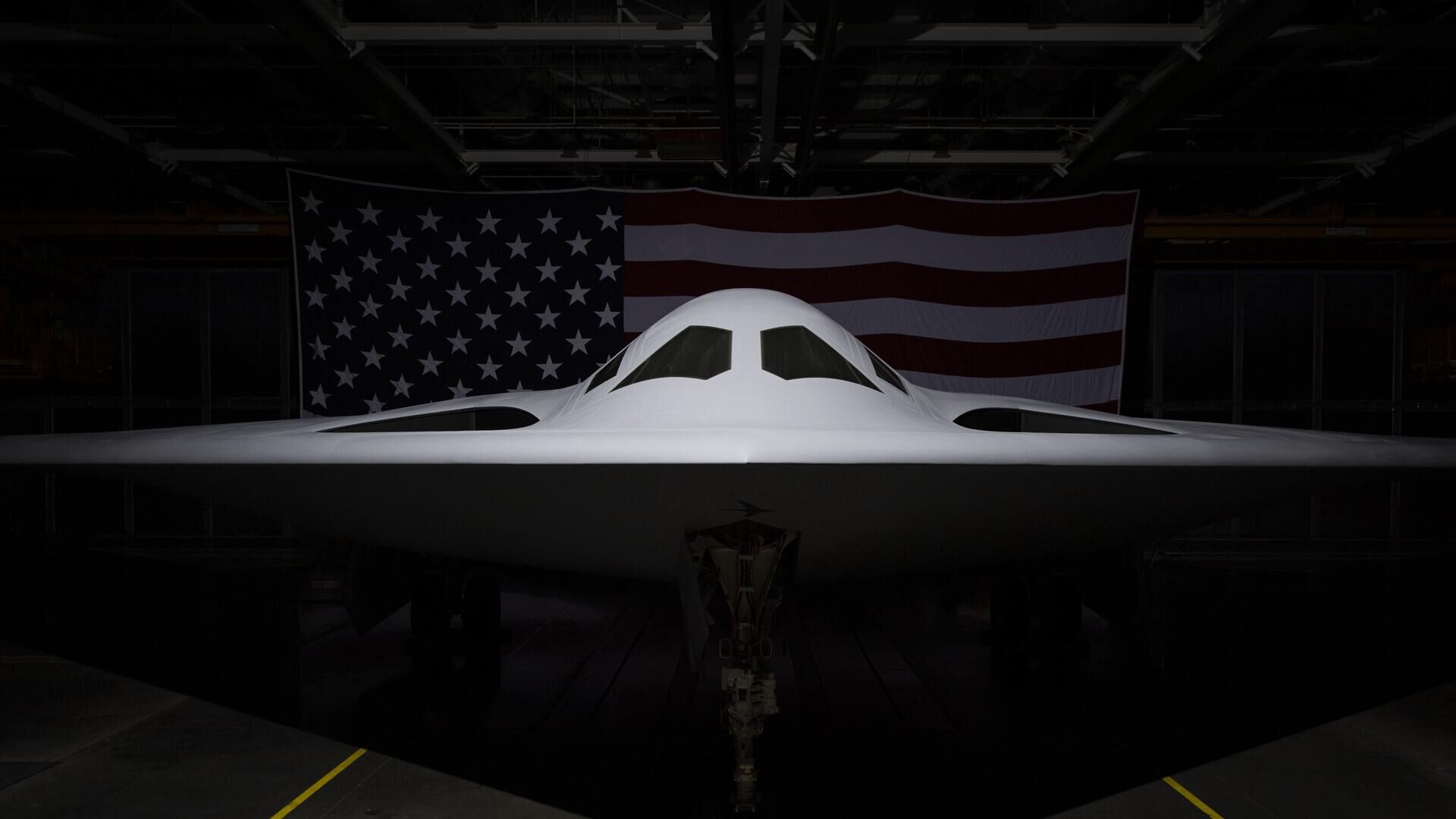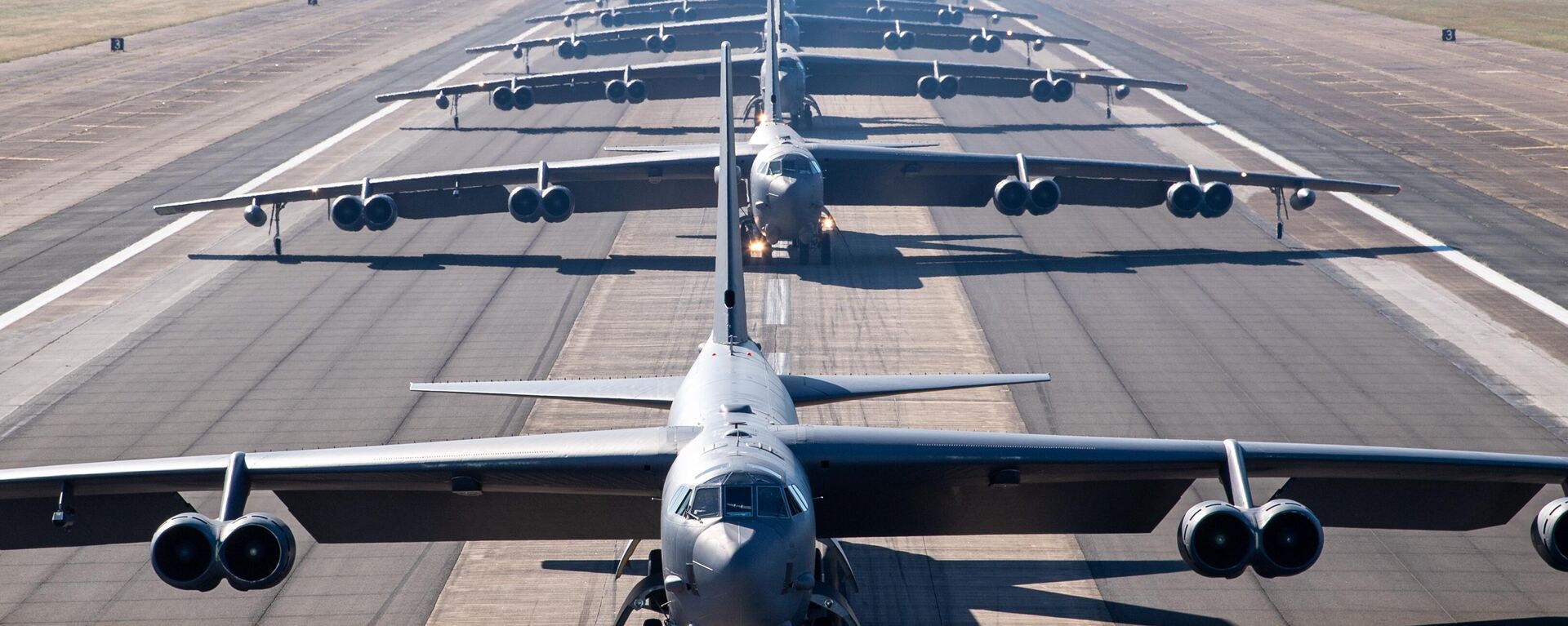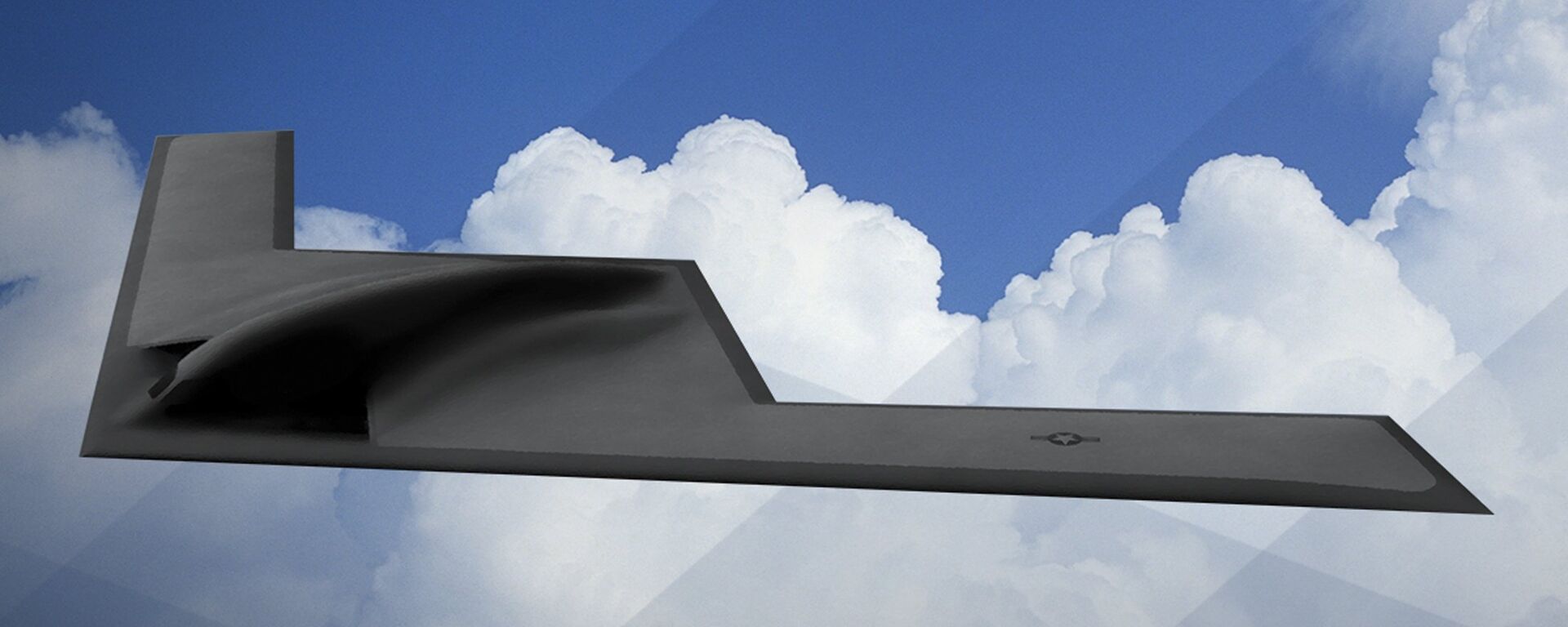Leaner, Meaner, Costlier: All You Need to Know About the B-21 Raider
11:22 GMT 03.12.2022 (Updated: 12:35 GMT 03.12.2022)

© Photo : Twitter / @northropgrumman
Subscribe
The Pentagon unveiled its next-generation strategic stealth bomber on Friday, with the plane, built by defense giant Northrup Grumman, expected to complement America’s existing bomber force, which includes the B-2 Spirit, the B-1B Lancer, and the ancient but dependable B-52 Stratofortress, when it enters service four to five years from now.
The B-21 Raider is shaping up to become the US Air Force’s latest, greatest way of flying around dropping bombs on people.
At a slick unveiling ceremony Friday at its Palmdale, California manufacturing facility, Northrop Grumman and the Defense Department spared no expense, including a Hollywood movie-style trailer, and a rendition of the national anthem accompanied by flyovers of America’s existing lineup of strategic bombers, organized by US Global Strike Command.
“The B-21 Raider ushers in a new era – a bomber like no other, with stealth, advanced weapons systems and an open systems architecture built into every element. This first-ever sixth-generation aircraft pushes the limits of what’s possible, showcasing the dedication and skills of thousands of people working to build a more secure future. This changes everything,” a voiceover in the opening video proclaimed.
Along with Northrop Grumman CEO Kathy Warden, the ceremony was attended by none other than Pentagon chief Lloyd Austin. “The B-21 Raider is the first strategic bomber in more than three decades. It is a testament to America’s enduring advantages, in ingenuity and innovation. And it’s proof of the [DoD’s] long-term commitment to building advanced capabilities that will fortify America’s ability to deter aggression today and into the future,” Austin said.
But slick marketing shtick and appeals to patriotism aside, what’s under the hood of the new machine?
Facts and Details
The bomber is named after the Doolittle Raiders – a group of US airmen who led a daring World War II-era operation to bomb Tokyo on April 18, 1942. The raid would become the first of thousands of US airstrikes on Japan during the war, with these operations leveling over 60 Japanese cities and killing as many as 800,000 people in firebomb attacks, and concluding with the atomic bombings of Hiroshima and Nagasaki (the first and so far only use of nuclear weapons in war) in 1945.
The bomber has an estimated range of over 9,650 km without refueling. That’s less than the old B-52H Stratofortress, which has a range of over 14,080 km, and its subsonic contemporary the B-2 (11,100 km), and the supersonic B-1B (12,000 km), respectively. Still, that’s enough to strike fear into the hearts of America’s adversaries, according to Austin. “It won’t need to be based in theatre. It won’t need logistical support to hold any target at risk,” he said.
According to unofficial estimates, the B-21 will have a payload of 10-15 tons, below that of the B-2 (18-23 tons, respectively). Northrop hasn’t detailed what sorts of bombs the new plane can carry within its internal ordnance bays, but if it’s anything like its wedge-shaped predecessor, these could include 230 kg unguided bombs, 910 kg general purpose precision guided munitions, B61 or B83 nuclear bombs, and AGM-154 glide bomb or AGM-158 cruise missile weapons – launched at ranges beyond the ability of enemy air defenses to counter (although the Stratofortress, built nearly 70 years ago now, can theoretically also perform the same mission).
One of the B-21’s top selling features is its stealth capabilities. “Fifty years of advances in low-observable technology have gone into this aircraft. And even the most sophisticated air defenses will struggle to detect the B-21 in the sky,” Austin promised. He did not elaborate. Like its predecessor, the aircraft is expected to be virtually invisible to enemy radar thanks to its distinct shape and advanced polymer coatings.
The bomber also features an “open system architecture,” which Austin said would make it “highly adaptable,” and allows for the incorporation of “new weapons that haven’t been invented yet.” The bomber is also “multifunctional,” according to the Pentagon chief, designed to “handle anything from gathering intel to battle management to integrating with our allies and partners.”
Coming Soon to the Skies Near You
Flight testing of the B-21 is expected to begin in March 2023, with the bomber set to start entering service with the Air Force in 2026 or 2027, if everything goes according to plan.
The aircraft has a projected price tag of $692 million apiece, with the Air Force planning to build at least 100 total. Six are being built today. As with most military projects with limited congressional oversight, prices have a tendency to balloon. The B-2, which was designed in the 1980s and began to enter service in 1997, had a per-aircraft price tag of over $2.13 billion inflation unadjusted dollars. 132 B-2s were planned, but only 21 were ever built thanks to the end of the Cold War and the refocusing of US military budgets on the so-called "War on Terror." The B-2 was only ever used to attack Yugoslav forces in 1999, and in the US wars of aggression in Afghanistan, Iraq, and Libya, with none of these nations having air defenses that would merit the use of such an advanced piece of military hardware. Whether the B-21 will be used for anything different remains to be seen.
If the B-21’s predecessors are anything to go by, it is expected to be a money-grubbing pig of an aircraft to fly and maintain. According to Government Accountability Office data, the B-2 has a per flight hour cost of over $150,700, and requires 60 man-hours of maintenance for every flight hour. The B-1B costs about $173,000 per flight hour, while the B-52H costs $88,354. That means that for Friday’s B-21 unveiling ceremony alone, the Air Force blew at least half a million dollars for the opening flyover.



